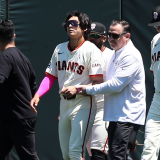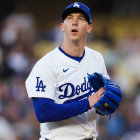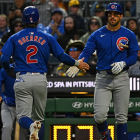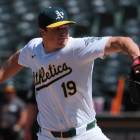
Major League Baseball 2021 Opening Day is nearly here. The regular season kicks off Thursday, April 1. CBS Sports has spent the past month previewing the year to come as it pertains to the on-the-field dynamics -- how this team will play; whether that team will be able to get over the hump; and so on -- but it's important to note that this season will have serious and significant off-the-field ramifications that merit monitoring as the regular season begins.
To verify that thesis, let's get down to business and breakout the subheads to detail three potential off-the-field developments concerning the 2021 MLB season.
1. Some return to normalcy
In many respects, the 2021 campaign will resemble the typical season more than it does the pandemic-altered 2020 edition. Teams are scheduled to play 162 games apiece with the hope that they'll occupy one of the 10 playoff spots this fall, and they'll do so in front of crowds, albeit ones that are smaller than they're accustomed to at the start of the season. The minor leagues will even return, though not until later on and in an altered format.
This season won't mark a complete return to the ways of old, of course. The pandemic is and will remain ongoing. Players and personnel will continue to run the risk of contracting and spreading COVID-19 throughout the year, and they'll have to remain mindful about and proactive with their preventive measures, including partaking in the vaccination effort.
The Blue Jays, accordingly, will again open the season without having the ability to access their Toronto nest; instead, they'll play in Dunedin, Florida (their spring training home) for the time being.
Overall, though, this season is shaping up to fall closer in line with 2019 than 2020, and that's a welcomed development.
2. But for how long?
The natural progress of things suggests that if this season is veering back toward normalcy, then next year could realign with it. The catch is that the 2022 season isn't guaranteed to happen, and we don't mean in some greater existential sense.
The Collective Bargaining Agreement is set to expire this winter, and it's anyone's guess as to whether MLB team owners and the MLB Players Association can agree to terms on a new CBA before next season becomes compromised. Some 16 months ago, the odds were in favor of a work stoppage of some kind. Now, it's at least possible that the risk of three consecutive compromised seasons will push the pair closer together.
Take note of the wording there: "it's at least possible"; so are a lot of other things that never come to fruition. With that in mind, fans would be wise to savor this season.
3. Rules reset (for the most part)
In a combination of the first two points, this season will be played under the standard rules after the two sides failed to reach an agreement on an expanded postseason or a universal designated hitter. That means 10 teams will qualify for the playoffs instead of 16, and that pitchers will once again take up the lumber to help their own cause without the universal designated hitter.
Both aspects are expected to be used as negotiating chips during the aforementioned CBA talks -- just don't expect them to be traded straight-up. The owners desire a larger playoff field (likely 14 teams) as a means of generating more revenue through gate and broadcasting deals. The players would theoretically gain 15 starting jobs, but teams already treat the DH position as a low-value, low-skill threshold, suggesting the union's financial gains would be trifling in comparison.
In all likelihood, the next MLB season -- be it in 2022 or beyond -- will have both, a larger playoff field and the universal DH.






















